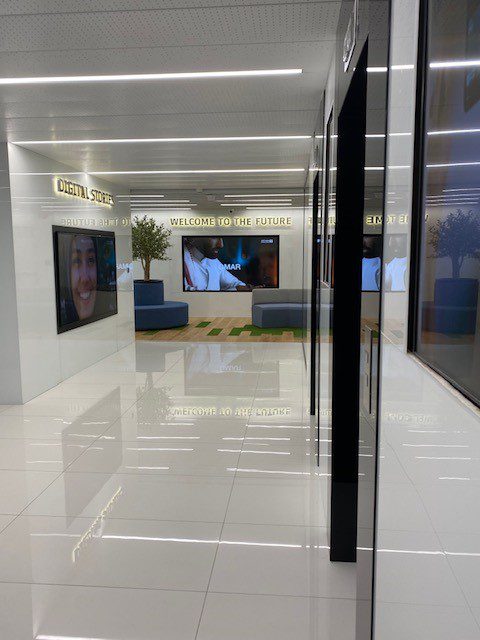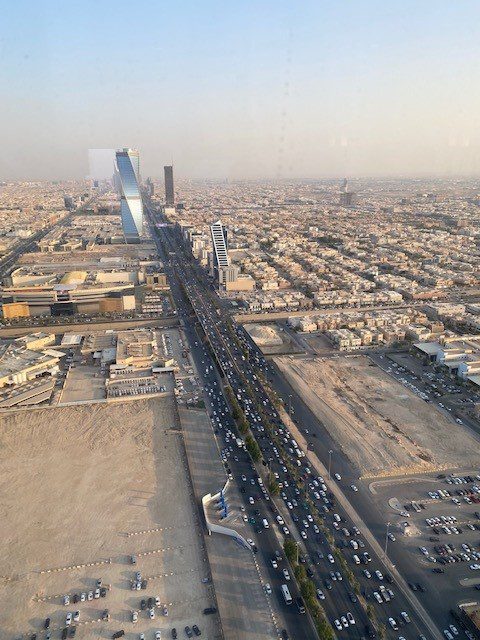by Daphne Poon – Equities Analyst, Emerging Markets
The JH Explorer series follows our investment teams across the globe and shares their on-the-ground research at a country and company level.
Part and parcel with being an equities analyst is the mandate to seek differentiated views on investment opportunities that are underappreciated by the broader market. It is with this perspective in mind that I looked forward to my recent trip to the Middle East, which is a region characterized as being highly dependent on hydrocarbons.
The countries along the western shore of the Arabian Gulf are also known for their historically conservative societies, and here I was, a foreign businesswoman conducting meetings with senior executives and government officials. Perhaps understandably, I harbored some trepidation that the research I was conducting on the region’s companies and economic prospects might not go as seamlessly as it would for my male colleagues.
One goal of this trip was to test the conventional wisdoms of a conservative society fearful of change and a collection of countries that have yet to fully embrace the opportunity to diversify their economies away from an overreliance on energy. In both respects, my time in the Middle East exceeded my expectations. What I found was a region in transition, from both an economic and social perspective. The degree of structural reform occurring in several Gulf countries – unimaginable just a generation ago – belies the region’s modest 7.2% share of the MSCI Emerging Markets Index and serves as a reminder that the universe of emerging market investment opportunities extends far beyond East Asia and Brazil.
Unlocking potential
Many of my social concerns were assuaged upon arrival in Saudi Arabia as I found myself welcomed in places I visited and at meetings I attended. I saw groups of men and women mingling in public area and observed women working in various roles and sectors, such as immigration officers, receptionists at hotels, and senior representatives at government organizations. The share of women in the Saudi workforce has risen from 22% in 2016 to the current 34%– already exceeding the target set by the Kingdom’s ambitiousVision 2030initiative. (For perspective, not long ago, Saudi women could not dine in the same area of restaurants as men and were not allowed to drive.) From an economic standpoint, a country that can tap underutilized human capital is likely on the path of enhancing productivity, thus fueling economic growth.

A corporate office focused on digital transformation. Source: Janus Henderson Investors.
Another area where social reform is unlocking economic potential is the focus on empowering Saudi Arabia’s young population – a median age of 32. A housing program featuring generous mortgage subsidies targets 70% home ownership by 2030, encouraging the Saudis to marry younger and begin forming their own households. Similarly, corporations are prioritizing developing young talent, which will likely prove complementary to the trend of women entering the workforce and serve to boost aggregate household income and incentivize change in consumer behavior. Ultimately, these reforms should have a positive impact on sectors geared toward consumers, including banking, healthcare, and retail. These developments also likely explain why Saudi Arabia ranks so high with respect to citizens believing their country is on a favorable track – a view that I came to share after my positive interaction with myriad Saudi citizens.
Beyond hydrocarbons
Recognizing developed nations’ desire to curb their use of hydrocarbons, Gulf governments have directed entities such as Saudi Arabia’s Public Investment Fund and National Development Fund underVision 2030to allocate energy windfalls toward projects across a range of sectors. Given the existing composition of the economy, the petrochemicals and renewables sectors are natural targets for growth, but so are others, including housing, tourism, education, and hospitals.
An inescapable fact – given the proliferation of cranes – is that infrastructure projects are a major priority across the region. In Saudi Arabia alone, the Kingdom seeks to transform much of the eastern shore of the Gulf of Aqaba into a hub of innovation known as NEOM.
As is the case elsewhere, digital transformation is engrained across these initiatives, which is something I experienced firsthand with a seamless, online visa-approval process. Given my focus on the financials sector, I took special note of the embracing of fintech by both the regulator and the banks, especially as it relates to engaging the digitally enabled younger generation in a range of financial services.

View of Riyadh with plenty of construction sites. Source: Janus Henderson Investors.
Taking a holistic and long-term view
It is laudable that Saudi Arabia and other Gulf countries are seeking to diversify their economies and move up the value chain. But such grand projects are not without risks. However, notable missteps over the past few decades in other emerging markets – especially those overly reliant upon infrastructure and debt to propel growth – can hopefully provide a template of what not to do.
While some of the projects might register returns that fall short of expectations from a purely financial perspective, their aggregate benefit to the economy as they catalyze the private sector will undoubtedly prove meaningful in the long run. We will, of course, be closely monitoring progress on these initiatives in the years ahead.






